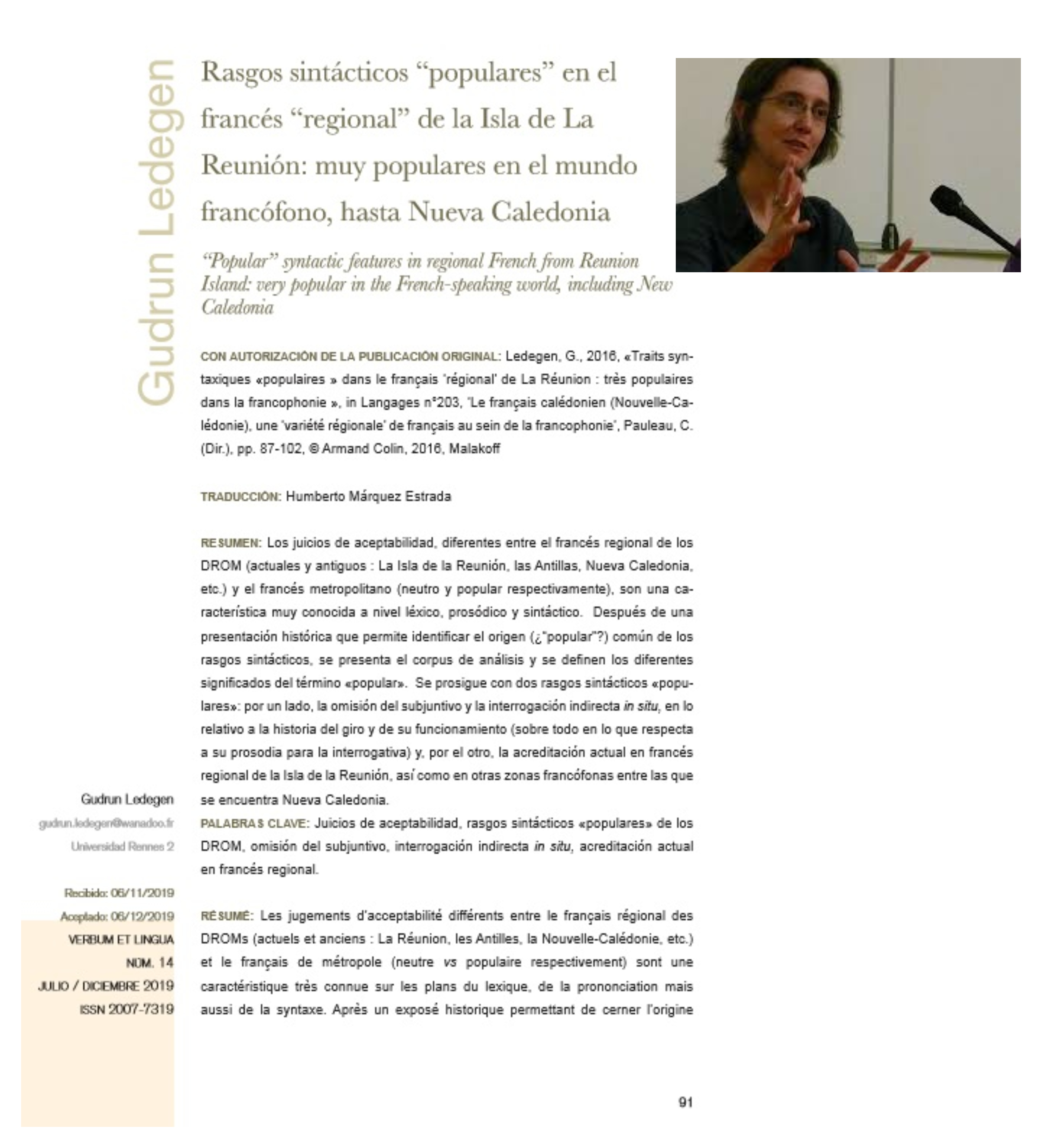“Popular” syntactic features in regional French from Reunion Island: very popular in the French-speaking world, including New Caledonia
DOI:
https://doi.org/10.32870/vel.vi14.133Keywords:
acceptability judgment, syntactic, omission of the subjunctive, indirect in situ interrogation, current occurrences in regional FrenchAbstract
Differences of acceptability between the regional French from the DROMs (current and ancient départements et régions d’outre-mer (“overseas departments”): Reunion Island, West Indies, New Caledonia, etc.) and metropolitan French (respectively, neutral vs popular), are very well known in vocabulary, pronunciation but also in syntax. After a historical presentation identifying the common (“popular”) origin of the syntactic items, follows the presentation of the corpus and the definition of the term “popular”. Two “popular” syntactic items are then examined, the omission of the subjunctive and the indirect in situ interrogation, for what concerns the history of the structure, their uses (among others what concerns prosody for the interrogative structure) and current occurrences in regional French of Reunion Island and in other French-speaking areas, of which New Caledonia. key words: acceptability judgment, syntactic “popular” ítems from DROM, omission of the subjunctive, indirect in situ interrogation, current occurrences in regional French.
Downloads
Metrics













